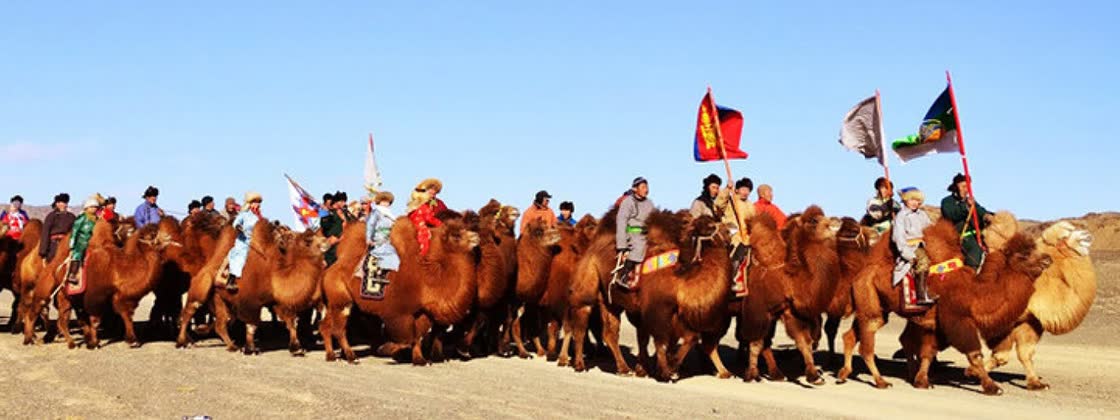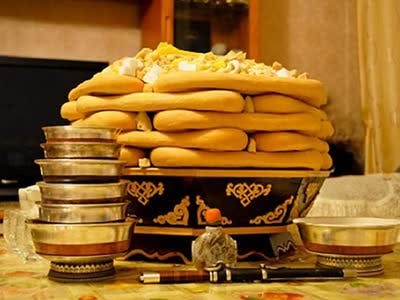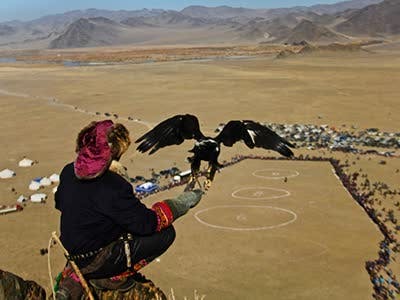The Gobi Desert Thousand Camel Festival
ABOUT THE CAMEL FESTIVAL.
Attending the Gobi Desert Thousand Camel Festival allows you to immerse yourself in the unique culture of camel herding communities in the Gobi Desert. It offers a chance to witness exciting camel races, participate in traditional activities, and experience the beauty of the desert landscape.
The Gobi Desert Thousand Camel Festival is an annual event held in the Gobi Desert region of Mongolia, specifically in the area around Dalanzadgad in Umnugobi Province. Here's some information about the festival:

- Cultural Significance: The Thousand Camel Festival is dedicated to celebrating and preserving the cultural heritage of the nomadic herders who rely on camels for their livelihood in the Gobi Desert. It is an opportunity to showcase the importance of camels in Mongolian culture and highlight the traditional practices of camel herding.
- Timing and Location: The festival usually takes place in March, during the winter when the weather is relatively mild. The festival site is located near Dalanzadgad, the capital of Umnugobi Province, which serves as a gateway to the Gobi Desert.
- Camel Races: One of the main highlights of the festival is the camel races. Participants, mostly nomadic herders, compete in various race categories, including long-distance races and shorter sprints. It is a thrilling spectacle to witness as jockeys skillfully navigate their camels across the desert landscape.
- Camel Polo and Relay Races: In addition to camel races, the festival also features camel polo matches and relay races. Camel polo is a unique twist on the traditional sport, with teams of riders attempting to score goals using long-handled mallets while riding on camels. The relay races involve teams of riders passing a symbolic item, such as a flag, between camels.
- Cultural Performances: The festival provides a platform for showcasing traditional Mongolian music, dance, and singing performances. Visitors have the opportunity to experience the vibrant cultural heritage of the nomadic communities through live performances by local artists.
- Traditional Competitions and Activities: Alongside the camel-related events, the festival includes various traditional competitions and activities such as traditional costume showcases, camel wool spinning demonstrations, and traditional Mongolian wrestling matches.
- Cultural Exchange and Market: The festival offers an opportunity for cultural exchange between local herders and visitors. It provides a chance to interact with the nomadic communities, learn about their way of life, and purchase local crafts and products at the market stalls.
RELATED TOURS
The Mongolian Lunar New Year, known as Tsagaan Sar or White Moon, is one of the most important traditional festivals in Mongolia. It is a time for families to come together, celebrate, and welcome the arrival of the new year according to the lunar calendar
The Golden Eagle Festival is an annual cultural event held in Mongolia, primarily in the Bayan-Ulgii Province, known for its rich Kazakh heritage and traditional eagle hunting. Here are some key points about the festival:
The Khuvsgul Lake Ice Festival is a vibrant winter event held annually in Mongolia. Located in the northern province of Khuvsgul, Khuvsgul Lake is known for its stunning beauty and frozen landscapes during the winter months. Here's some information about the Khuvsgul Lake Ice Festival:


